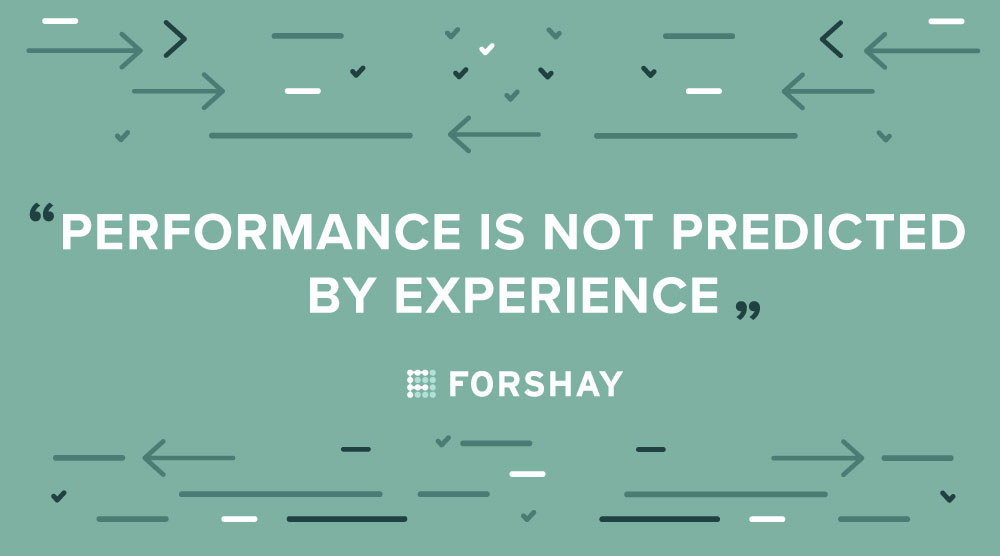Not sure if you’ve heard the news (j/k we totally know you have), but hiring is not much fun right now. The whiplash from early pandemic hiring freeze to “new normal” habits around alternative working scenarios have a lot of companies scrambling to find talent to fill their open positions. And it’s happening everywhere, in every industry we serve. A serious disruption to the status quo is good (mostly) but complicated for employers who still need to make things happen in a recently-vaccinated country (thank you to all who made that happen).
Here are a few things we’re seeing with our clients, combined with how we solve this together.
WHY IS IT SO HARD TO HIRE RIGHT NOW?
- OVERACHIEVER ANXIETY
Can high performers perform highly? Are the demands of the job achievable for people who already expect a lot from themselves? Workloads are not often well managed (we have yet to see an employee survey that says “managers are really nailing this priorities thing!”), so your highest performers may worry that they can’t perform at their best if they’re overworked and lacking in clear priorities, focus, and team collaboration boundaries that also give them some oxygen to refuel their creativity. Which creates frustration for employers and employees because that previous super star is now barely staying afloat. - RETURN TO THE WORKPLACE DREAD
Employees want remote-first organizations. They’ve (mostly) enjoyed working remotely, and don’t want to lose the upside of what it has offered. Some people are interested in hybrid work situations, but are worried it could create second-class employees. They think that people who work at “HQ” will not be treated the same way as those who work at “satellite offices” or home. Headquarters has always represented a hierarchy of power and an easier chance at upward mobility. If working remotely feels like it’s a disadvantage to growth and inclusion/belonging, then employees need to be thoughtful about what “return to work” means for them personally and professionally. - BURNOUT TURNOVER
The pandemic has caused a lot of people to reevaluate their priorities. What do they want to do with their lives? Where do they want to live? How do they want to live? What kind of job fulfills them? In the before-times, the answers may lead to “I need a new company” or “I need new challenges.” And that’s still true. But plenty of people are making major overhauls and instead of just, “I’m leaving this job for another job somewhere else”, they’re saying “I’m going to the mountains/ocean/valleys/desert/another continent for a year.” Or they’re selling their house, buying an Airstream, and traveling across North America. And that’s hard to compete with if you’re a company. You can’t exactly counteroffer on someone’s #livingmybestlife dreams.
What roles do we see this being the biggest issue for? Head of People, People/HR Business Partners, and DEI roles. The emotional labor of these roles during the pandemic meant many have been overloaded with work (often doing the jobs of three people) not to mention the stress of the pandemic on their own lives and families. Enter: exhaustion and resignations.
SO, WHAT IS FORSHAY DOING TO SOLVE THESE PROBLEMS?
- INTERIM IS THE MAGIC WORD
Okay, true story. One of our clients had a Head of People person resign (headed to the mountains, of course). They’re in tech so the CEO can’t slow their roll or miss a beat. They need someone like yesterday, but that’s difficult (see above). So, we are double-teaming on an Executive Search to find their new Head of People while also providing an interim Head of People. This interim leader is managing the return-to-office issues, deciding how to handle performance management and compensation in a hard-to-decipher lookback from COVID, and providing necessary steady focus and progress in DEI. Meanwhile, we’re also helping HR teams with interim recruiters and compensation experts who can roll up their sleeves and take work off their plates to avoid that burnout thing. - TEAMWORK MAKES THE DREAM WORK
Another way we’re helping solve the problem is hosting workshops for managers on supporting better boundaries, priorities, and focus to support high-performing teamwork. Full disclosure: we’re “oxygen mask first” types, so we’re also practicing these strategies ourselves. We’re all works in progress. As Adam Grant points out, burnout is an org issue, and leaders need to actively support their teams who want clear frameworks and tools. We’ve got you. - KEYWORD: DIVERSITY + HIRING
2020 was a stand out year of pain, awareness, training, and desire to establish solid and effective (not performative) DEI practices. Many companies struggle to put these ideas into action since their current HR and recruiting teams are tapped out. That’s where we can step in to fill leadership roles in HR, DEI, and Marketing with diverse slates. As companies grow, they look to us more and more to help them ensure their leadership teams fulfill their DEI goals. Lucky for us, that’s one thing we do very well.
WHAT WILL REMAIN TRUE & IMPORTANT?
This is where we try to avoid all our cliches about silver linings and light at the end of the tunnel. But when Sally started Forshay 10 years ago, her goal was to “enable people to do their best work on terms that work for their full lives.” (see her TEDx here) Fast forward to today, and it’s still our goal, and will remain true and important in solving the “Future of Work”. Gone are the “work selves” and “home selves” — we’re solving for the whole person. At a macro level across the country, this feels like it’s only gotten more challenging. But there is…wait for it…good news. We have more tools, more science to leverage, and more ways to solve these win/win goals. All it takes is intention, backed up by a decent budget, and focused execution. Tackling hard things defines each of us. We’re here to help you get it done.








